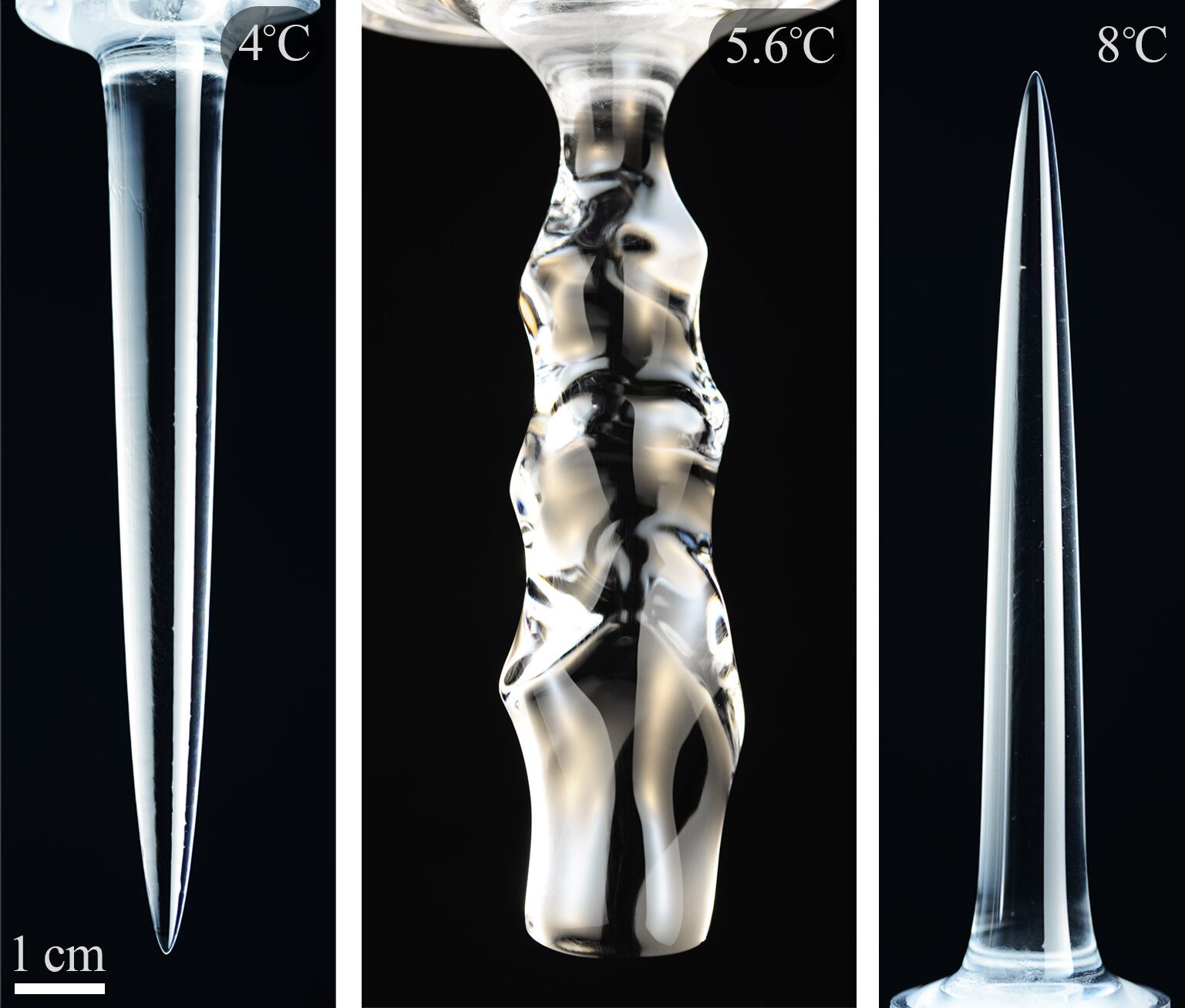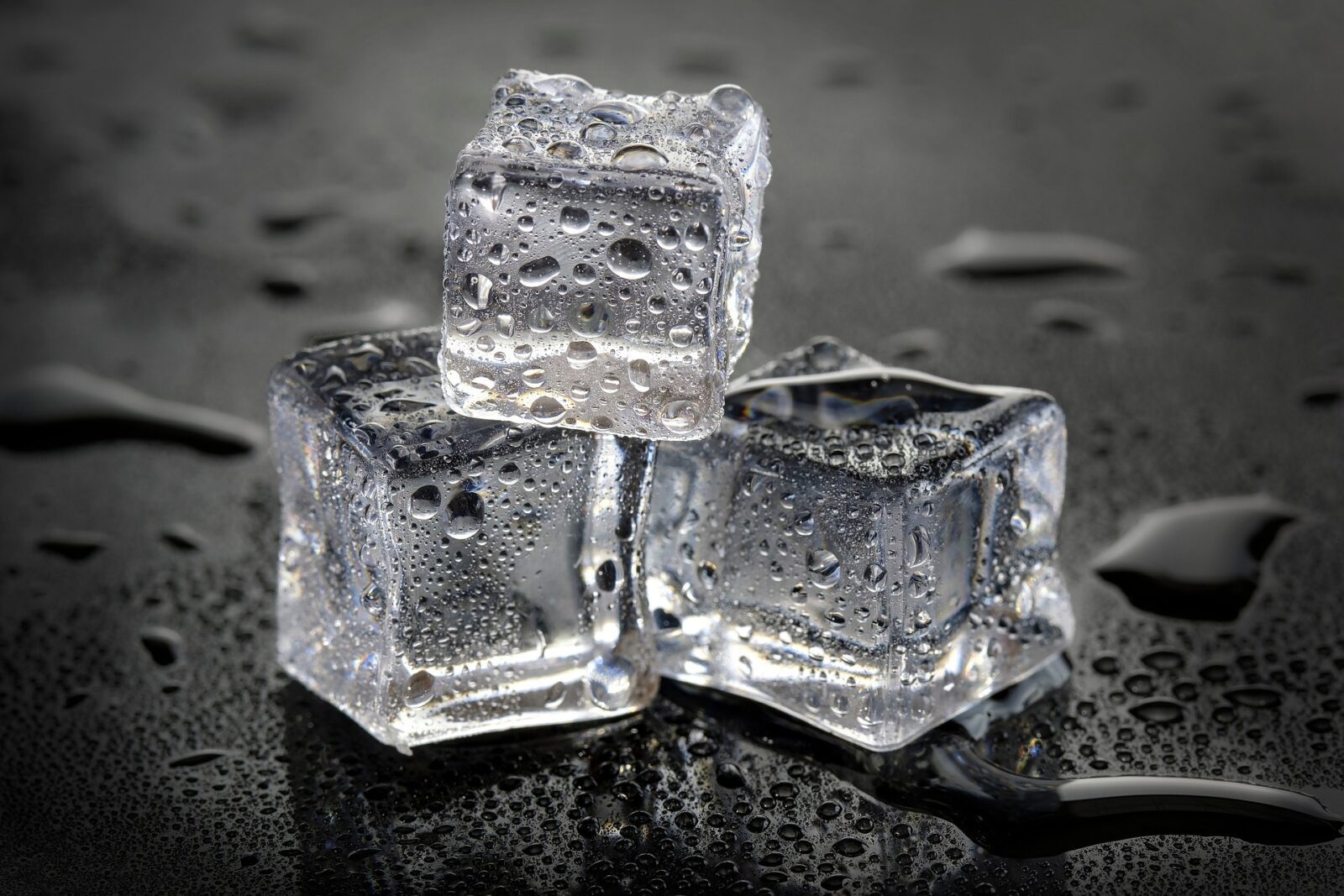In the bigger picture, this experiment can lead people to understand better the Earth’s changing climate and the increasing pace of ice melting throughout our world. However, understanding why ice takes different shapes is a matter of intense curiosity for whoever looks at an icicle.
A team of mathematicians and physicists has identified how external influences affect ice structures, such as water temperature. Its recently released findings may provide another method for determining the elements that cause ice to melt.
Leif Ristroph, an associate professor at New York University’s Courant Institute of Mathematical Sciences and one of the paper’s authors, explained:
“The shapes and patterning of ice are sensitive indicators of the environmental conditions at which it melted, allowing us to ‘read’ the shape to infer factors such as the ambient water temperature,”
Alexandra Zidovska, an associate professor in NYU’s Department of Physics, added:
“Our work helps to understand how melting induces unusual flow patterns that in turn affect melting, which is one of the many complexities affecting the ice on our planet.”
Scott Weady, an NYU graduate student, and Josh Tong, an undergraduate at NYU’s College of Arts and Science at the time of the research, were the paper’s other authors.
The researchers conducted a series of experiments at NYU’s Applied Mathematics Laboratory and Center for Soft Matter Research to study the melting of ice in water, specifically how the water temperature impacts ice’s final forms and patterning. To do this, scientists developed ultra-pure ice devoid of bubbles and other contaminants. The researchers observed the melting of ice immersed in water tanks in a “cold room,” which is akin to a walk-in refrigerator with regulated and variable temperatures.
Ristroph, who runs the Applied Mathematics Laboratory, noted:
“We focused on the cold temperatures—0 to 10 degrees Celsius—at which ice in natural waters typically melts, and we found a surprising variety of shapes that formed,”
At shallow temperatures—below around 5 degrees Celsius—the fragments take on the appearance of a spike or “pinnacle” pointing downward, comparable to an icicle but smooth, with no ripples.
The Amazing Patterns Found in Nature Unravel Mysteries
When temperatures rise over around 7 degrees Celsius, the same fundamental structure emerges upside down—a spike pointing upward.
The ice has wavy and rippling patterns melted into its surface in-between temperatures.
Ice melting into the water at 6 degrees Celsius shows the sides developing wavy patterns known as scallops.
Similar patterns, known as “scallops,” may be observed in nature on icebergs and other ice surfaces.
The variances in the form are caused by changes in water flows, which are governed by their temperatures.
The image depicts the various forms of melted ice that occur in the cold (4 degrees Celsius), moderate (5.6 degrees Celsius), and warmer (8 degrees Celsius) ambient water temperatures. The Applied Mathematics Laboratory at New York University is responsible for this image.

Weady adds:
“Melting causes gradients in the temperature of the water near the ice, which causes the liquid at different places to have different densities. This generates flows due to gravity—with heavier liquid sinking and lighter fluid rising—and such flows along the surface lead to different rates of melting at different locations and thus changes in shape.”
According to the findings, this feature is responsible for creating significantly diverse flows depending on the exact value of the water temperature.
Downhill pinnacles are connected with upward flows at low temperatures, while upper pinnacles are related to downward flows. The scalloped patterns occur when upstream flows contact downstream flows farther away, destabilizing into vortices that gouge holes into the ice.
Ristroph explains that results explain some of the unique features of ice found in nature, notably the so-called pinnacle morphology of icebergs, consisting of sharp spikes or spires, and the so-called scallops, which consist of wavy patterns of pits.
He concluded the larger backdrop for our study pertains to the Earth’s changing climate and the increasing pace of ice melting throughout our world. It’s critical to understand better the physics and math of melting at smaller sizes since they are fundamental components of larger-scale climate models.












Leave a Reply